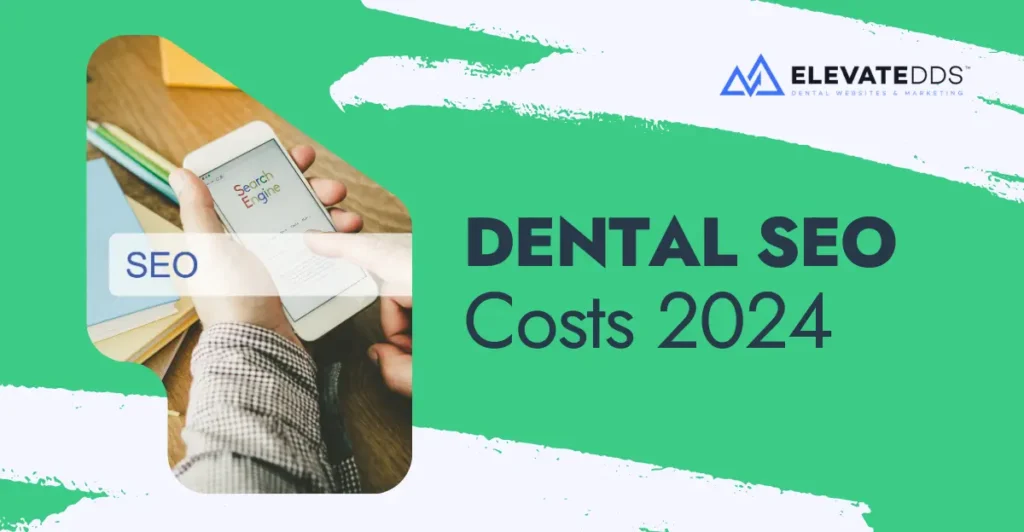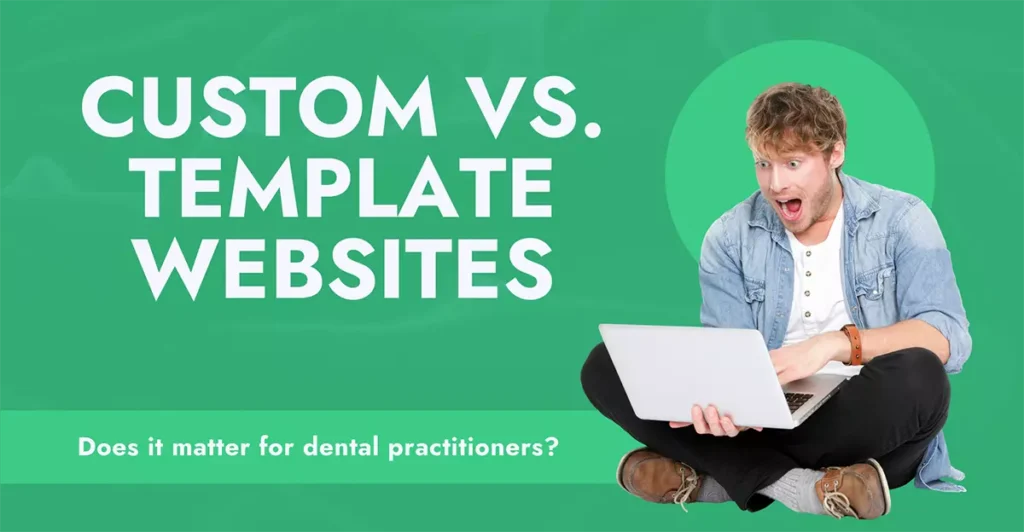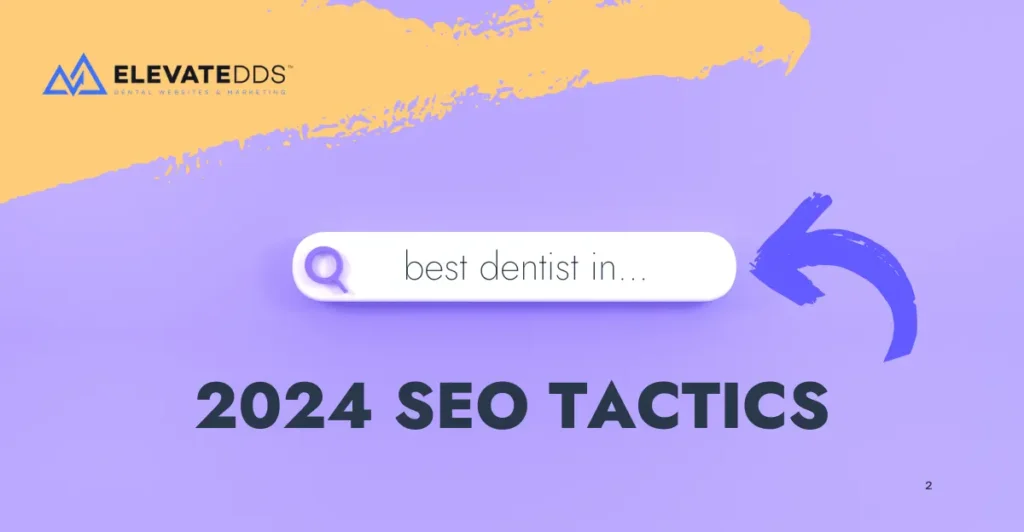Most Important Elements of Dental Websites

If you’re a dental practitioner and you run your own practice, then chances are you have an existing website. You probably spent quite a bit of money for the design and customizations. You probably also pay a varied fee each month for hosting, as well as additional marketing services. But do you actually know what you’re paying for and if it’s really important?
Hopefully, after watching the video you will have a better understanding of what you actually need from your dental website and marketing provider in 2016. There are a ton of website choices out there for dentists today and everyone claims to have the best product. The reality is that the blind are leading the blind. Most dental website providers have a minimal understanding of what it takes to be successful with a website and marketing efforts. And these companies are selling websites to doctors that don’t understand the internet. The result is that many doctors end up disappointed in the end product.
What Matters With Your Web Presence
If you take a look at user experience data that companies like Google, Alexa and Comscore release quite frequently, you’ll notice certain trends in how a user interacts with a website. Attention spans have run increasingly thin, causing the time each visitor spends on your website to drastically decrease. You will also notice that over 50% of all potential patients will be using a mobile or tablet device to view your website. This means that more users are consuming and viewing content on smaller screens than they were a year or two ago. They’ve also gotten a lot smarter when it comes to trusting what previous patients have said about your practice. Potential patients and customers WILL take the time to read third party website reviews on your practice.

So how does the above affect what you need from a dental website & marketing provider?
If I had to rank what matters, it would probably look something like the following:
- Responsive design with speed optimizations
- Personalization of your website with clear call to actions
- Reputation management and review campaigns
- SEO and local map pack optimizations
Responsive Design for Mobile & Tablet Viewing
Responsive design has been endorsed by Google and is better for SEO. On top of these two points, you only need to make edits on one website and it will, in turn, reflect on all devices. As pointed out in the video, having a separate website for mobile viewing generally tends to forget about users on tablet and iPad devices. This leaves a bad experience for potential patients who are researching a new dentist on their tablet devices. If implemented correctly, responsive design should include a great user experience across all devices.
Optimize Loading Speed for Responsive Websites
The reality is that you have about a 10-second window to make a lasting first impression. This means that your large patient education library is pretty much useless in today’s instant gratification society. And if your website is slow to load, you risk losing about 40% of all visitors. The average visitor might check out your homepage and possibly your “staff” or “about us” page. After that, they’ve already made a decision on whether they want to research your practice more or find a better competitor.
Make sure that when using responsive design, your website isn’t “bloated” with too much information, too many photos and too much code. Speed optimizations can and should be made to ensure that your website loads in around 3 seconds or less. I actually wrote a previous blog post about website design mistakes with more statistics that can be found here.
Personalization & Clear Call to Action
You’re going to want to make sure that your website is free of clutter, personal to your practice and has a clear call to action on every page. Again, if we stop to consider how visitors are actually using your website, this should start to make total sense. Visitors don’t have the patience to search around for the information they want. Visitors are on your website for an average of about 10 seconds. Make the most of this time.
Above all else, patients really want to see if your dental practice looks reputable
Patients really just want to see if your dental practice looks reputable. Above all else, you want to make sure that your practice appears reputable when someone clicks on your Google listing. If your website is a mess, this is the impression a potential patient will have of your practice. If your photography is outdated, spend a little money on a good, professional photographer. We can definitely recommend a good photographer in your area if you need one. Use good photography to show patients how awesome you are!
SEO, Local Map Pack Marketing & Reviews
Whilst these two services have quite a bit in common, they are actually two completely different elements with different ranking factors. One dentist can rank very well in local map pack results and very poorly in organic results (and vice versa). When considering your next dental marketing company, make sure that each element is fully addressed. Increasing your presence in both the map pack and organic listings will pay large dividends. Considering about 97% of all clicks will go to page 1 results according to a recent study found here, can you afford to neglect your SEO?

Local Map Optimizations
Local map rankings are based on your location and directory listings on third party websites, as well as business reviews. Business information from your website such as your business name, business address and phone number (or NAP) need to match the information on as many directories and map sites across the web as possible.
Reviews & Reputation Management
Most importantly you’ll want to make sure your business reviews are positive and plentiful. I cannot stress enough how much quality reviews can positively influence your business, while negative reviews can tank your online presence. Reviews should be looked at like other marketing campaigns. Make sure you are campaigning for positive reviews, as happy customers generally don’t think to leave reviews. It’s usually the unhappy customer that leaves a review…
Organic SEO
Organic listings, or Google search results that are generally located below the map results, are populated from on-site SEO factors, as well as off-site link building. In order to optimize for these results, your dental website company should be continually optimizing your website and looking for third parties to link back to yours.
Please feel free to contact us with any questions. We can also run a full assessment of your current online marketing efforts.
Need to speak with an expert?
Maximize your practice's efficiency today by scheduling an appointment with one of our experts. We're standing by to help you in your journey of elevated practice growth.
Drop Knowledge
Share these Elevated Insights with your professional network.
Elevated Insights
Dive into our other blog posts featuring creative ways to elevate your practice and dominate your service area.



